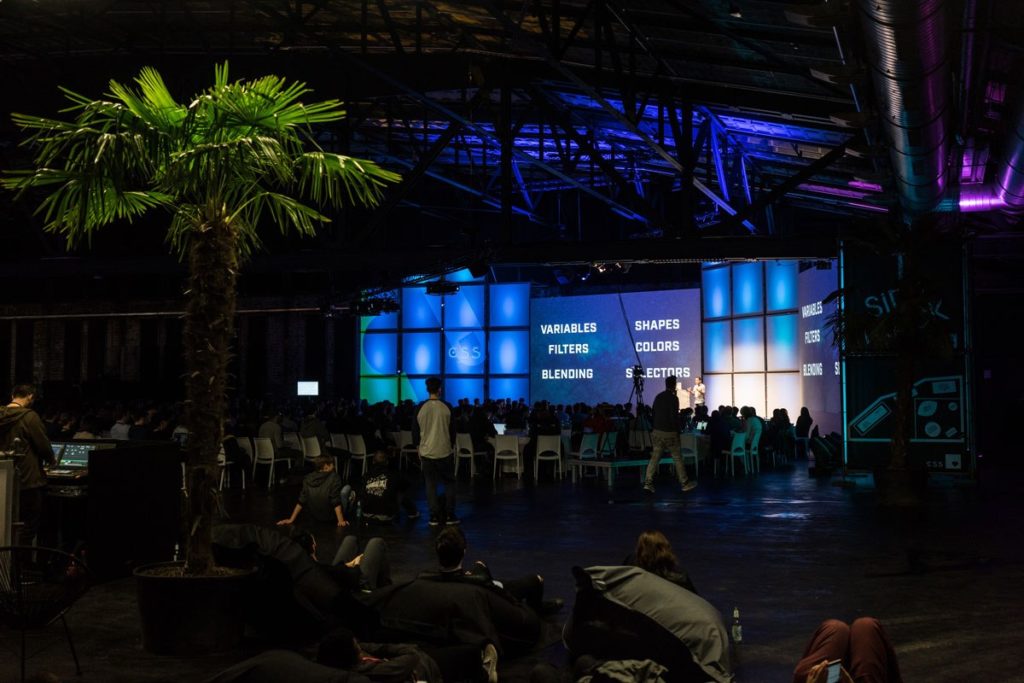Recently three of our developers attended the CSSconf 2017 in Berlin. The talks have been inspiring for us and once again we got clear about what a mature language CSS has become by now. The steady addition of new features continue to amaze and the enthusiasm of the community is infectious. The conference itself was well organized (the food was awesome!) and we appreciate that the organizers took so much care about creating a safe and diverse environment for everyone.
In this blog post we reflect on our learnings from the conference and share our experiences on developing efficient CSS at scale.
There are a lot of guidelines on how to write modular JavaScript and tons of books about how to make Java code efficient. But what does good CSS code actually look like? The answer is probably not that much different from other programming languages. The first step towards modular, reliable and reusable CSS code is to perceive CSS as a regular programming language. At CSSconf Ivana Mc Connell puts up the question: “What makes a good CSS developer?”. She points out that CSS still isn’t included as a programming language in the Stack Overflow survey and that there is even a hierarchy in many companies between CSS developers and “real” developers.
“We can always change the hierarchies. CSS is real development – let’s make that a given.”
(Ivana Mc Connell)
There are still developers and managers who think that CSS is just about putting fancy colors and setting some margin here and there. However, CSS has become a powerful tool and new features are continuously added, not to mention the various preprocessors that have become a quasi-standard throughout the last years. Things like grids, animations and filters are first class citizens by now and already wildly supported by browsers.
To showcase the feature richness of CSS, Una Kravets performs a live coding session where she puts up a simple yet fun and interactive browser game just by making use of regular CSS. Mathias Bynens already did something similar at CSSconf EU 2014, where he presented a mock of a shooter game that only consisted of one single line of HTML. The point here is not that CSS should replace JavaScript. On the contrary – while CSS and JavaScript are and always will be different things, it’s interesting to see the borders blurring and how both languages influence each other.
Make it scale, but keep it consistent
At Small Improvements we work on a large single page application. In three feature teams we maintain roughly 40k lines of LESS code. Two of our biggest ongoing challenges are to make our styling consistent and our CSS code modular and reusable.
Maintaining a style guide and establishing a design culture
Especially when multiple teams work on one and the same application there is a certain risk that each team comes up with a slightly different style of implementation. There are numerous examples for this and conducting an interface inventory (as suggested by Brad Frost) can yield surprising results. Achieving consistent styling is even more difficult if the implementation of the frontend is technically not homogeneous. Even though we implement all new frontend features at Small Improvements in React, we still have a lot of Angular code and even some old Wicket pages lingering around. The user doesn’t care about these details, so the question is how to keep track of all the various patterns that we use across the app and provide a seamless design language?
In her talk “Scaffolding CSS at scale”, Sareh Heidari shared an example how to discover and extract visual patterns at the BBC news website. We can confirm that we made good experiences with a similar approach. We recently set out to build a new style guide for our app that allows us to stay aware of all the different patterns we use. This helps us not only to compose new features out of existing components. Instead, the main key for us is not the style guide itself but it is the process around it: having a close eye on everything that’s newly-built and coming together frequently to talk about how to integrate these additions into the bigger picture. We perceive the style guide as a cause for discussion; you could even say that it’s an artless byproduct of our design process.
Project setup and implementation
For us it works best to structure our code base in a domain-driven way. We follow this approach in our entire app and can fully recommend it. For the frontend we decided to use CSS modules (in form of LESS files) that we put right next to our React components. That way the component itself always comes with its own (inward) styling. There are various attempts in the React community for this kind of project layout. (It even became popular to go further by using some sort of inline styling, see Mark Dalgleish’s talk for an overview.) For us CSS Modules worked well since we used LESS previously, which then allowed us for a convenient and gradual migration path.
Glenn Maddern – who heroically stepped in last-minute for Max Stoiber – updated us about the most recent changes in the Styled Components project. But no matter whether you prefer CSS modules or Styled Components, it is crucial to understand the motivation behind these libraries in order to build large scale applications: Glenn Maddern’s talk at ColdFront16 gives a good insight into this way of thinking and why it’s beneficial.
The only thing where we jealously glance over to Styled Components is the ability to parametrize CSS code so easily. Therefore we are looking forward for CSS variables being better supported in browsers, because that would be the native solution to the problem. David Khourshid demonstrates the handover between JavaScript and CSS in his talk “Getting Reactive with CSS”. With this solution the JS-CSS-intersection hassle falls right into place.
Takeaway
We don’t have a catchy conclusion to draw. There is certainly no right or wrong in what approach works best or which library helps most. For us it was nice to see a lot of our current assumptions confirmed, and if we were asked to write down three of them, then it would be these:
- CSS is a fully-fledged programming language – for sure! Stay up to date with all new features and take advantage of them once they are commonly supported.
- Keep styling and markup closely together. This promotes reusability best. Leverage component interfaces in order to create clear and predictable boundaries.
- Talk, talk, and talk frequently about visual patterns to ensure consistency in the long term. Some sort of process or documentation can help here.
The development team here at Small Improvements have done their fair share of conferences in the past (thanks to the individual learning budgets we are offered). It’s awesome now that our design team has grown to the point that we’re also attending designer-developer related conferences such as CSSconf EU. Bring on next year!







